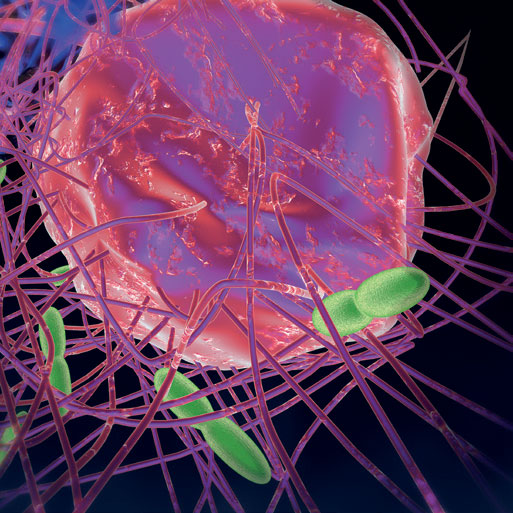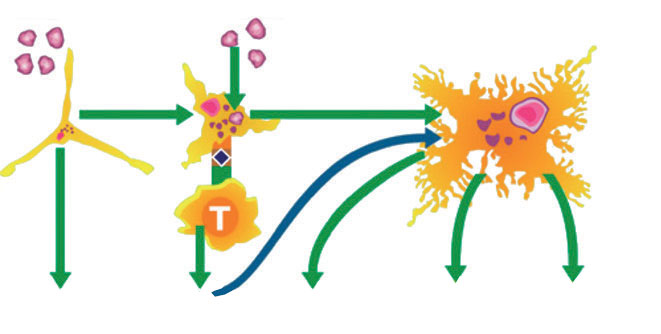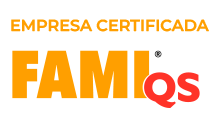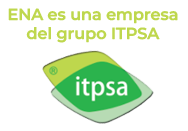By the technical team of
European Natural Additives, S. L.

Inflammation is a normal response of the body to certain processes.
- an endogenous agent (tissue necrosis, bone breakage)
- Mechanical agents (cuts, blows)
- Environmental agents (cold, heat)
- Chemical agents (corrosives)
- Immune (hypersensitivities)
- Infectious (microorganisms)
Let us focus our attention on the latter group: Inflammation due to infectious processes.
FROM A NUTRITIONAL POINT OF VIEW, WHY IS THE INFLAMMATORY RESPONSE LINKED TO INFECTION SO IMPORTANT?
As soon as macrophages come in contact with any microorganism, they will be activated and trigger an immune response, a cytotoxic response and an inflammatory response through chemical mediators: cytokines. (Figure 1).

“The major cost in the immune response is the expenditure for the synthesis of acute phase proteins in the liver.” R.F. Grimble, (1992)
There are numerous and costly metabolic effects due to cytokines, especially Interleukins 1 and 6 ( IL1 and IL6) and Tumor Necrosis Factor Alpha (TNFα).
In healthy tissues we can have oxidative damage mediated by enzymes, free radicals and reactive nitrogen and oxygen species produced by macrophages.
To control the effect of these cytotoxic substances, the liver has to produce Acute Phase Proteins.
IL1, IL6 and TNFα generate effects on the central nervous system (loss of appetite and drowsiness) but, above all, they modify the metabolism of nutrients in the liver and their utilization by the tissues and stimulate the production of Acute Phase Proteins.
In response to these cytokines, tissues are impaired in their ability to use nutrients.
During an infectious process, as a consequence of these chemical mediators, animals are limited in their ability to use nutrients in order to express their production potential whether it is to produce muscle, eggs or milk.
One of the most studied metabolic costs is related to metabolism: at the same time that there is a high demand for some amino acids for the production of Acute Phase Proteins, there will be changes in their digestibility and a mobilization of muscle protein.
These significant changes in amino acid requirements and muscle mass losses would be reason enough to focus attention on the metabolic cost of inflammation.
What can we do?
We could adjust the diet formula to approximate the specific needs during infectious disease, but infectious disease is not easy to predict and, by the time symptoms of the disease begin to appear, infection has long since occurred. During the incubation phase, we already have the impact of cytokine production by macrophages and therefore nutrient utilization limitation is already occurring.
The objective should be to PREVENT THE INFLAMMATORY RESPONSE.
USE OF ANTI-INFLAMMATORY DRUGS
Curative treatment
Classical therapy with NSAIDs (non-steroidal anti-inflammatory drugs) is based on the use of drugs with an effect on cyclo-oxygenase (COX), an enzyme involved in the production of inflammatory prostaglandins from arachidonic acid.
But this approach would not be useful for our purpose:
- These drugs do not inhibit the production of IL1, IL6 or TNFα by macrophages;
- They are not specific COX2 inhibitors (the one related to prostaglandin synthesis) so they present several side effects and cannot be used for long periods of time: gastric ulcers, nephrotoxicity, CNS depression…
Preventive treatment
We can find a different strategy from the use of certain flavonoids.
Their advantage is that they act against inflammation at different levels:
- They are specific COX2 inhibitors (Van Dross, 2005; Lee, 2007; Ha, 2008; Lee, JH., 2010).
- They are inhibitors of IL1, IL6 and TNFα synthesis (Kim, 2004; Hirano, 2006; Huang, 2006; Pergola, 2006; Sawatzky, 2006; Lim, 2007; Nandakumar, 2008; Crozier, 2009. Nie, YC, 2012)
- They are potent antioxidants and inhibitors of ROS and NOS production (Liang, 1999; Olszanecki, 2002; Kim, 2004a; Van Dross, 2005; Comalada, 2006; Kim, 2006).
What are the advantages of using flavonoids?
Through the use of these substances we will be able to prevent the metabolic cost associated with infectious processes while combating the clinical signs of inflammation without the risks associated with their use in prolonged programs.
Decreased cellular oxidation and inflammatory cytokine production results in less need for synthesis of costly acute phase proteins.
We will be able to define programs based on the knowledge of the moments in our production cycle where we know that, recurrently, infectious problems and loss of indexes occur: at the beginning of the fattening phases, clinical and sub-clinical mastitis, intestinal infections…
Where are these molecules obtained from?
Some plants are naturally rich in these flavonoids. Their characterization, correct extraction and standardization may allow the implementation of these protocols to prevent the metabolic cost of inflammation.

ENACOX2®, the natural anti-inflammatory
ENACOX2® is an additive produced from a blend of plant extracts authorized by the EU in category 2b and rich in the above-mentioned anti-inflammatory flavonoids.
These extracts are standardized by HPLC to ensure that the content of active molecules will always be the same, regardless of whether the season has had more sunny or rainy days.
EXPERIMENTAL TEST
Effect of the use of ENACOX2® on the costs associated with swine mastitis.
At the IPVS congress in Cancun, Mexico, the results of a trial assessing the effect of this additive for the prevention of costs associated with mastitis in swine were presented (Astorga, F. and Martin, M.; June, 2014).
The test used 24 sows divided into 2 groups, control and treatment, and a total of 6 replicates (total of 72 sows per group). A total of 1626 piglets were weighed individually at birth and at weaning, and the losses during lactation were counted.
The results are shown in the following tables:
| Group | Mean | Standard Deviation | Coefficient of variation |
|---|---|---|---|
| Control Group | 1,418* | 0,223 | 15,74% |
| Treatment Group | 1,399* | 0,197 | 14,10% |
Mean birth weights (a) No significant statistical difference (p>0.05)
| Group | Mean | Standard Deviation | Coefficient of variation |
|---|---|---|---|
| Control Group | 5,684* | 0,890 | 15,66% |
| Treatment Group | 6,461* | 0,987 | 15,28% |
Mean piglet weaning weights (a,b) Statistically significant differences (p<0.05)
A NATURAL SOLUTION TO MINIMIZE THE METABOLIC COST OF INFLAMMATION
| Group | Mean | Standard Deviation | Coefficient of variation |
|---|---|---|---|
| Control Group | 12,86%a | 0,037 | 29,02% |
| Treatment Group | 8,49%b | 0,022 | 26,05% |
Percentage of mortality during lactation (a,b) Statistically significant differences (p <0.05)
ENACOX2® acts on:
- Activation of macrophages and neutrophils Synthesis of PGs and leukotrienes
- Free radicals
- Nitric oxide
- Antioxidant enzymes
Thus it decreases the synthesis of acute phase proteins; and being efficient against acute and chronic inflammations (arthritis).
-
- These types of additives have a number of comparative advantages that make them the choice:
- Effective in monogastrics and ruminants No prescription needed
- No residue
- Safe for animals and consumers.
Recommendations:
- Prevention of respiratory problems at the entrance of the bait.
- Reduction of sub-clinical mastitis.
- Prevention of post farrowing dysgalaxia in the sow.
- Decreased intestinal inflammation and improved nutrient absorption.
- Avoid side effects derived from the use of NSAIDs.
-
-

-
-
Dosage:
- Premix
- Feed: 0.5-2 kg/ton of feed.
- Unifeed car: 5-20 grams/animal/day.
- Soluble powder (water)
- 100 grams/3,000 liters of drinking water.
- Premix
-





